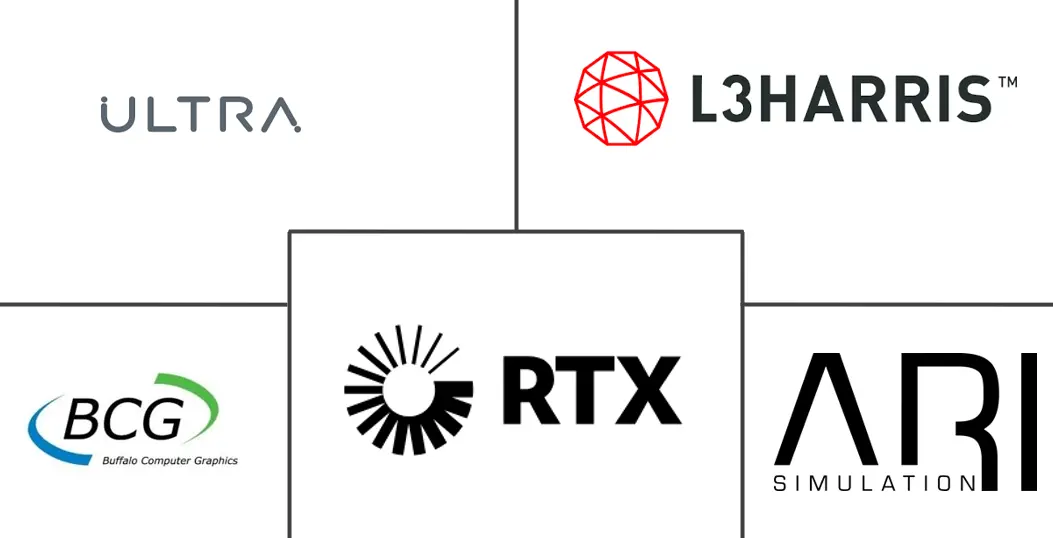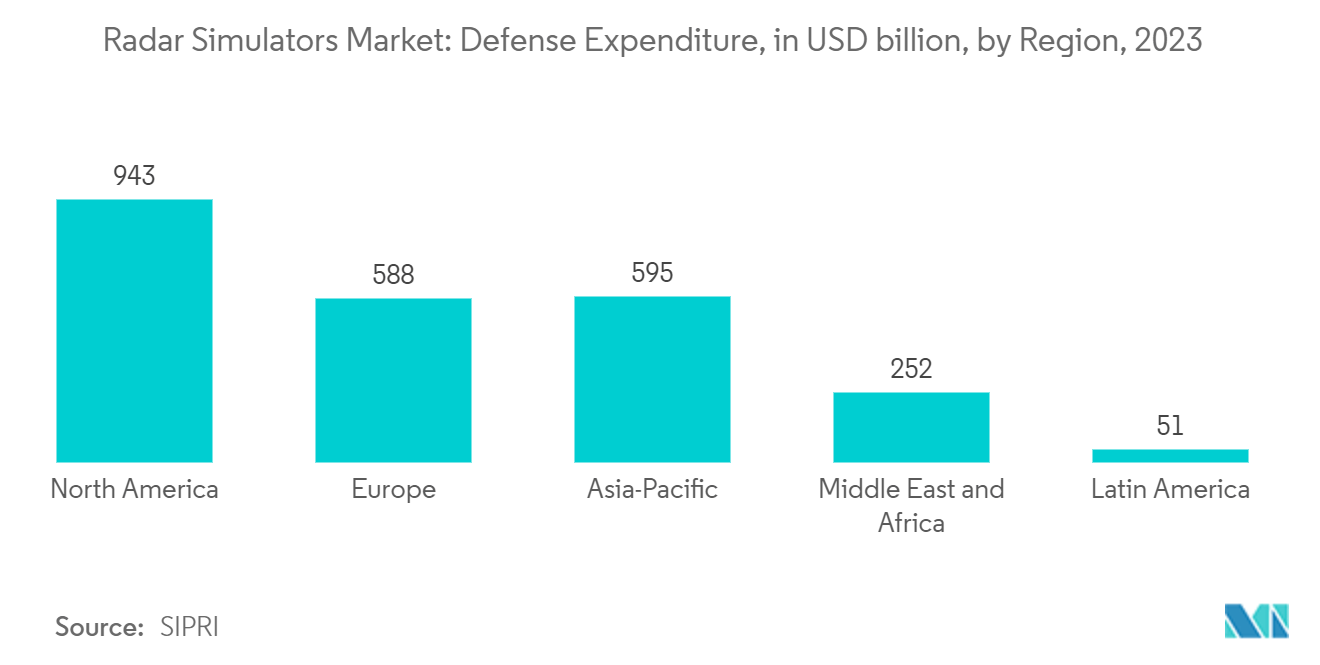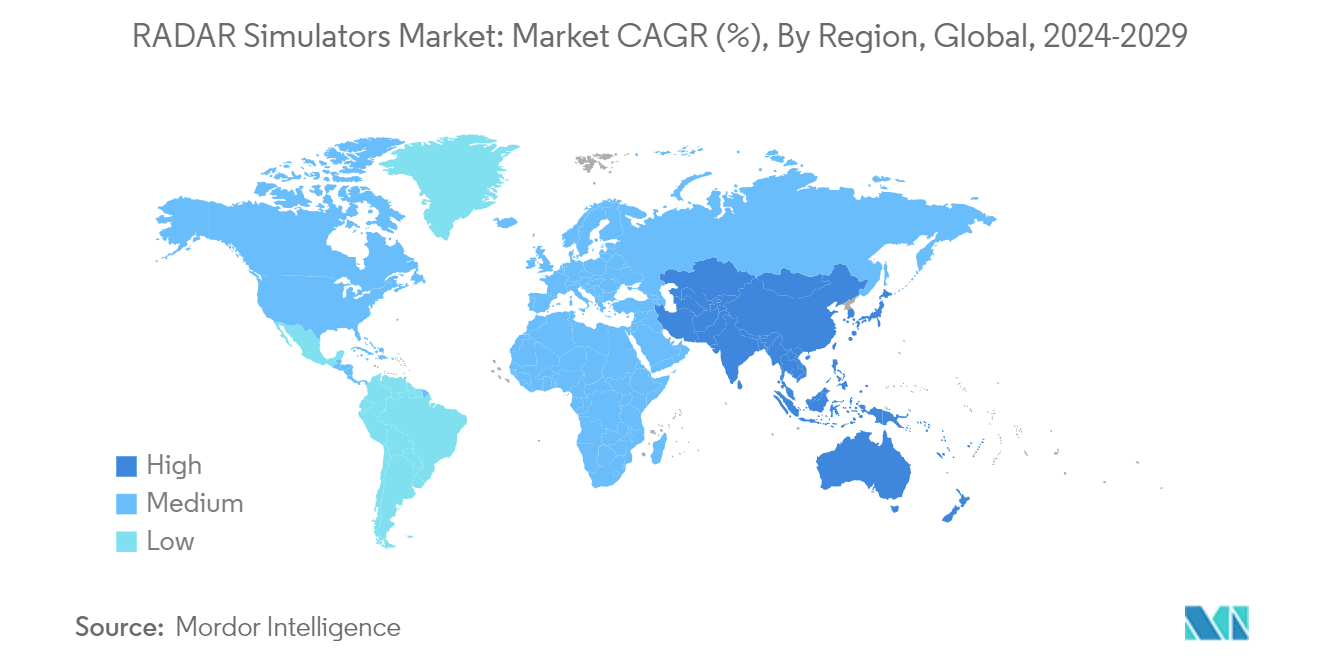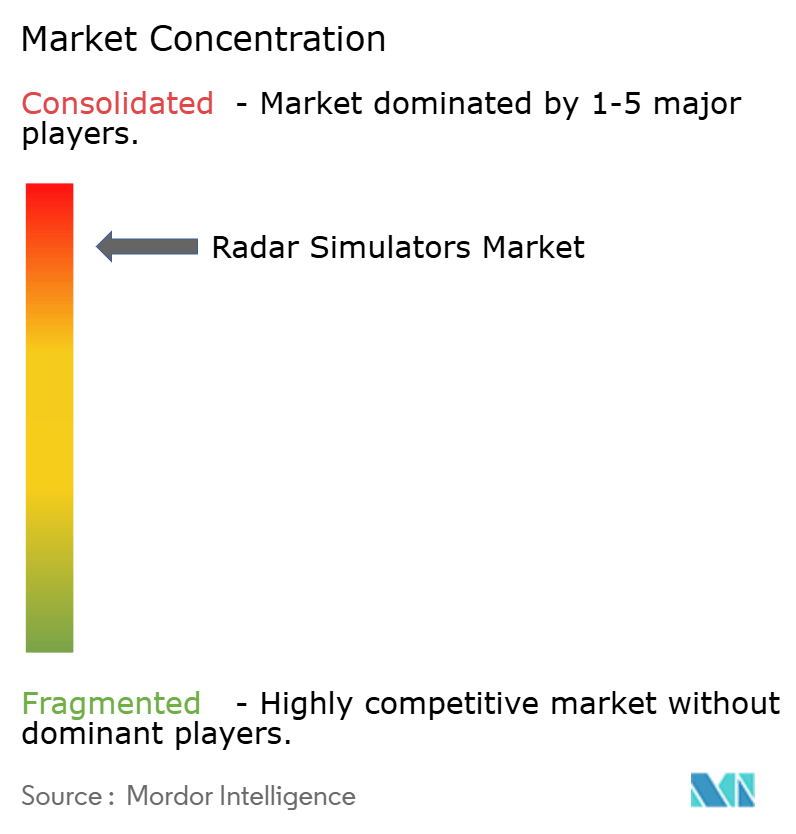Radar Simulators Market Analysis
The Radar Simulators Market size is estimated at USD 2.65 billion in 2025, and is expected to reach USD 3.56 billion by 2030, at a CAGR of 6.06% during the forecast period (2025-2030).
A radar simulator emulates various radar profiles to provide users with an appropriate environment for training or performing functional tests on a system. The system comprises both hardware and software components.
The emergence of modern warfare systems, such as electronic warfare (EW) and network-centric warfare (NCW), has bolstered the use of radars in military operations, thereby driving the demand for radar simulators for training military personnel.
The increasing emphasis on military ground clearance operations predominantly fuels the rising demand for radar simulators. With terrorists increasingly turning to UAVs to target civilians and critical infrastructure, air force authorities, homeland security groups, and defense forces are facing a mounting challenge. Consequently, governments worldwide prioritize deploying radar simulators to train their police and internal security forces. However, rapid technological evolution in the field of microelectronics renders a financial burden on the market players as the players cannot capitalize and recover their R&D costs.
Different types of radar simulators are being configured with multiple technologies to address emerging threats. This has fostered the integration of modular architecture design for radar simulators.
Radar Simulators Market Trends
Military Segment to Witness Significant Growth During the Forecast Period
Geopolitical tensions drive a focus on technological superiority, giving rise to technological leapfrogging. Asymmetric threats, like unconventional warfare and cyber-attacks, are pushing nations to adopt more adaptive defense strategies.
Amid escalating threats, countries prioritize enhancing their military capabilities. This has led to a surge in military programs, primarily focusing on upgrading existing capabilities. Nations are directing substantial investments through indigenous development or global procurement to bolster their military prowess. Notably, this uptick in investment is largely propelled by the rising defense expenditures.
For instance, in July 2023, Adacel and SkyWarrior clinched a USD 7 million deal to supply US military simulators. Adacel Technologies and SkyWarrior Flight Training collaborate to equip the US military with cutting-edge systems. These will replace the existing Advanced Tower Simulator and Army Flight Radar Training Simulator, a move under the Flight School Training Support Services (FTSSS) program. Such developments will drive the demand for the military segment during the forecast period.
Asia-Pacific to Witness Highest Growth During the Forecast Period
Robust economic growth, coupled with favorable population and demographic profiles in developing countries, especially in the Asia-Pacific region, is driving air passenger traffic in the region. Thus, Asia-Pacific is expected to generate the highest demand for radar systems during the forecast period.
The demand is mainly due to the increasing orders and deliveries of new aircraft, propelled by the region's ever-growing passenger traffic. By 2030, China and India are forecasted to become the world's largest aviation markets in terms of air traffic, while other countries, such as Indonesia and Thailand, are forecasted to enter the top 10 global markets.
Furthermore, regional military powerhouses, such as China, India, and Japan, invest significant resources in developing their aerial capabilities, including upgrading their existing radar technologies. The Asia Pacific region collectively spent USD 595 billion on defense in 2023, a 4.4% increase from the previous year. This growth was primarily driven by heightened military investments in China and its neighboring nations. Japan's 2023 military budget was particularly significant, signaling its most substantial military build-up since World War II. With a focus on bolstering its counterstrike capabilities, Japan plans to allocate USD 310 billion to its military between 2023 and 2027, averaging USD 62 billion annually. Such favorable trends are anticipated to drive the demand for radar simulators in the region.
Radar Simulators Industry Overview
A limited number of global dominant vendors characterizes the radar simulators market. These players include Mercury Systems Inc., L3Harris Technologies Inc., Buffalo Computer Graphics, Inc., RTX Corporation, ARI Simulation, and Cobham Ultra SeniorCo S.à r.l.
The market is highly competitive, with players competing to gain the largest market share. These players mainly compete based on their in-house manufacturing capabilities, global footprint networks, product offerings, R&D investments, and strong client bases. Constraints associated with the modularity of the design, due to the integration of several radar features into a single platform, impede the market's growth. Vendors must provide advanced radar simulators to end users to survive in an intensely competitive market environment.
Radar Simulators Market Leaders
-
L3Harris Technologies Inc.
-
ARI Simulation
-
RTX Corporation
-
Buffalo Computer Graphics, Inc.
-
Cobham Ultra SeniorCo S.à r.l.
- *Disclaimer: Major Players sorted in no particular order
Radar Simulators Market News
- September 2023: Cambridge Pixel introduced RadarLink, a cutting-edge software aimed at enhancing radar video transmission under bandwidth constraints. This software boasts features like intelligent data link monitoring and adaptive prioritization, tailoring its focus based on the significance of radio detections.
- January 2023: One Stop Systems (OSS), a prominent high-performance computing systems provider, secured a USD 3 million contract with the U.S. Department of Defense's Missile Defense Agency. The aim is to enhance the radar simulation system by integrating OSS's 4UV computing accelerator with the agency's mobile radar systems and edge data centers.
Radar Simulators Industry Segmentation
The market study encompasses a radar simulator's hardware and software components. A software-based radar system generates simulated radar video data by combining tracks, AIS, navigation, and secondary radar data. The radar simulator can create moving targets through integrated graphical tools to simulate real-time scenarios for trainers and system testers to use. The hardware segment considers components, such as antenna, transmitters, receivers, waveform generators, and microcontrollers, used to create a physical setup of the radar simulator.
The radar simulators market is segmented by component, application, and geography. By component, the market is segmented into hardware and software. By application, the market is segmented into commercial and military. The report also covers the market sizes and forecasts for the radar simulators market across different regions. For each segment, the market size is provided in terms of value (USD).
| Component | Hardware |
| Software | |
| Application | Commercial |
| Military | |
| Geography | North America |
| Europe | |
| Asia-Pacific | |
| Latin America | |
| Middle East and Africa |
Radar Simulators Market Research Faqs
How big is the Radar Simulators Market?
The Radar Simulators Market size is expected to reach USD 2.65 billion in 2025 and grow at a CAGR of 6.06% to reach USD 3.56 billion by 2030.
What is the current Radar Simulators Market size?
In 2025, the Radar Simulators Market size is expected to reach USD 2.65 billion.
Who are the key players in Radar Simulators Market?
L3Harris Technologies Inc., ARI Simulation, RTX Corporation, Buffalo Computer Graphics, Inc. and Cobham Ultra SeniorCo S.à r.l. are the major companies operating in the Radar Simulators Market.
Which is the fastest growing region in Radar Simulators Market?
Asia Pacific is estimated to grow at the highest CAGR over the forecast period (2025-2030).
Which region has the biggest share in Radar Simulators Market?
In 2025, the North America accounts for the largest market share in Radar Simulators Market.
What years does this Radar Simulators Market cover, and what was the market size in 2024?
In 2024, the Radar Simulators Market size was estimated at USD 2.49 billion. The report covers the Radar Simulators Market historical market size for years: 2019, 2020, 2021, 2022, 2023 and 2024. The report also forecasts the Radar Simulators Market size for years: 2025, 2026, 2027, 2028, 2029 and 2030.
Our Best Selling Reports
Radar Simulators Industry Report
Statistics for the 2025 Radar Simulators market share, size and revenue growth rate, created by Mordor Intelligence™ Industry Reports. Radar Simulators analysis includes a market forecast outlook for 2025 to 2030 and historical overview. Get a sample of this industry analysis as a free report PDF download.







